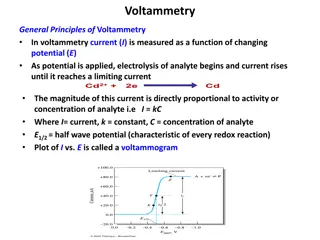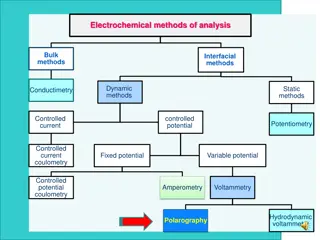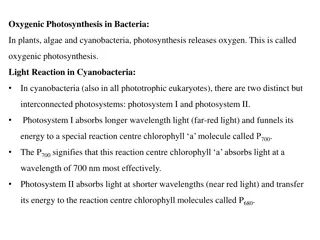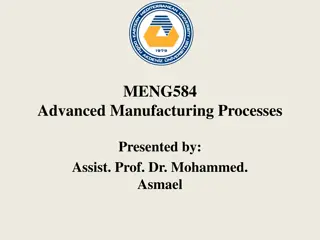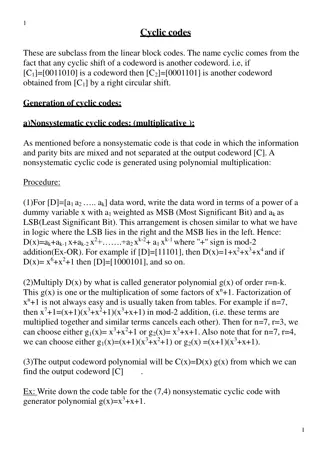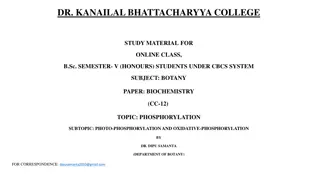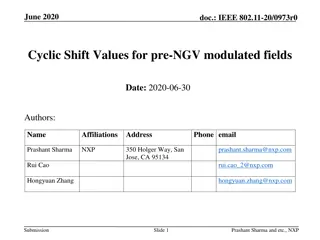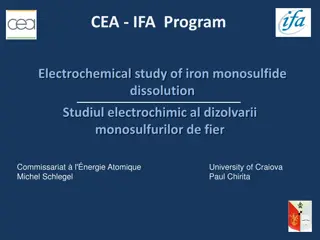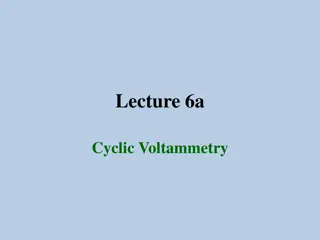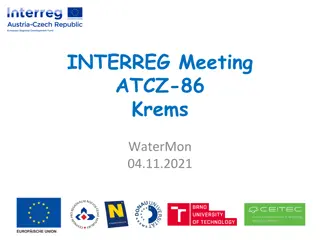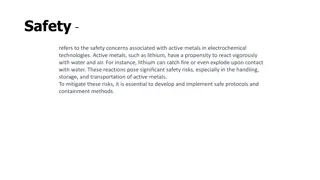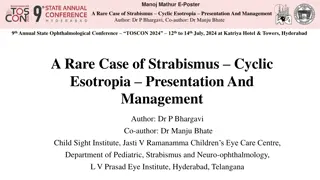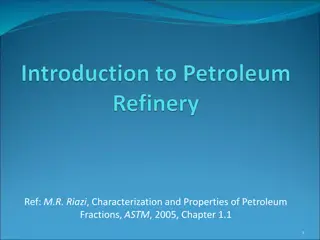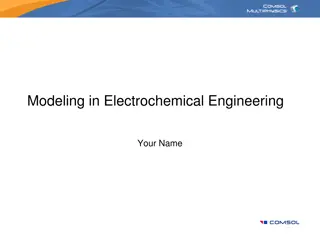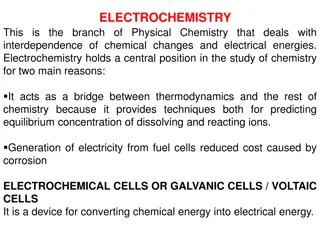Understanding Cyclic Voltammetry in Electrochemical Analysis
Cyclic voltammetry is a crucial electroanalytical technique for studying electrochemical behavior. It involves sweeping potential in a cyclic manner to measure current responses, aiding in understanding redox processes, electron transfer kinetics, and coupled reactions. The technique requires careful elimination of migration and convection currents by using supporting electrolytes and proper instrumentation with three electrodes. Diffusion control is essential for accurate results in cyclic voltammetry experiments.
Download Presentation

Please find below an Image/Link to download the presentation.
The content on the website is provided AS IS for your information and personal use only. It may not be sold, licensed, or shared on other websites without obtaining consent from the author. Download presentation by click this link. If you encounter any issues during the download, it is possible that the publisher has removed the file from their server.
E N D
Presentation Transcript
CYCLIC VOLTAMMETRY Dr. A. N. Paul Angelo Associate Professor, Department of Chemistry St. Joseph s College, Trichy - 620 002
Voltammetry refers to the measurement of current (A) that results from the application of potential (V) to an electro active species. Cyclic voltammetry is an electro analytical technique for investigating the electrochemical behavior of a system. It involves linearly sweeping the potential (increasing or decreasing) in the forward and reverse direction in a cyclic manner and recording the current response. It was first reported in 1938 and described theoretically by Randles. Observe Current Changes with Applied Potential Apply Linear Potential with Time
Involves linear scanning of potential of a stationary electrode using a triangular waveform - Solution is unstirred - The most widely used technique for quantitative analysis of redox reactions Provides information on -the thermodynamics of redox processes -the kinetics of heterogeneous electron transfer reactions - the mechanism of coupled reactions
Three transport mechanisms: (i) migration movement of ions through solution by electrostatic attraction to charged electrode (ii) convection mechanical motion of the solution as a result of stirring or flow (iii) diffusion motion of a species caused by a concentration gradient The movement of the analyte to the electrode surface should be diffusion controlled, hence migration and convection current should be avoided. Methods to eliminate migration and convection current The use of supporting electrolyte, which carries the maximum current but does not undergo redox reaction at the operating potential eliminates migration current 50 to 100 folds excess of supporting electrolyte is added along with the test solution. Convection current is due to thermal and mechanical agitation, it can be avoided by placing the instrument over an insulated, shock proof support.
Instrumentation Cyclic voltammetry involves three electrodes in solution containing analyte Working electrode(WE): microelectrode whose potential is varied with time Reference electrode(RE): potential remains constant (Ag/AgCl electrode or calomel) Counter electrode: Glassy carbon or Pt that completes circuit, conducts e- from signal source through solution to the working electrode Supporting electrolyte: excess of non-reactive electrolyte (alkali metal) to conduct current
The terms involved in Cyclic voltammetry Switching Potentials / Limiting potentials : Working electrode is swept between two potential limits E1 & E2 called the Limiting potentials or Sweeping potentials. Triangular Wave form : The excitation signal is a pulse of potential between the limiting potentials that is exposed to the working electrode. Cathodic Peak potential (Epc) : The peak potential of the cathodic process Cathodic Peak Current (ipc) : The maximum current corresponding to the cathodic process. Anodic Peak potential (Epa) : The peak potential of the anodic process Anodic Peak Current (ipa) : The maximum current corresponding to the anodic process. Scan rate ( ) : It is the ratio of potential expressed in millivolts (mV) to the time taken for the one complete cycle expressed in seconds (s) . Ex: 500 mV/s.
Diagnostic tests for cyclic voltammograms of Reversible system at 25 C ip is proportional to C ip is proportional to 1/2 - Implies electrode reaction is controlled by mass transport ip/ic 1 for simple reversible couple -For a redox couple Diagnostic tests for cyclic voltammograms of quasi-reversible system at 25 C i. ip increases with scan rate, but is not proportional to scan rate. ii. ipc/ipa = 1, provided ac=aa = 0.5 iii. Ep is greater than 59/n mV and its increases with increasing scan rate iv. Epc shifts negatively with increasing
Conclusion: At the research level cyclic voltammetry is an handy tool to underestand the redox reaction of organic and inorganic species. It can reveal the exact oxidation state of the metal ions in the complexes. The ease at which the metal ion can be oxidized or reduced. It can be utilized in the qualitative identification and quantitative estimation of a organic species. It reveal the nature of the functional groups present in the organic moiety. It can be used to find the types of electron transfer mechanism is follows like CE, EC, or ECE


